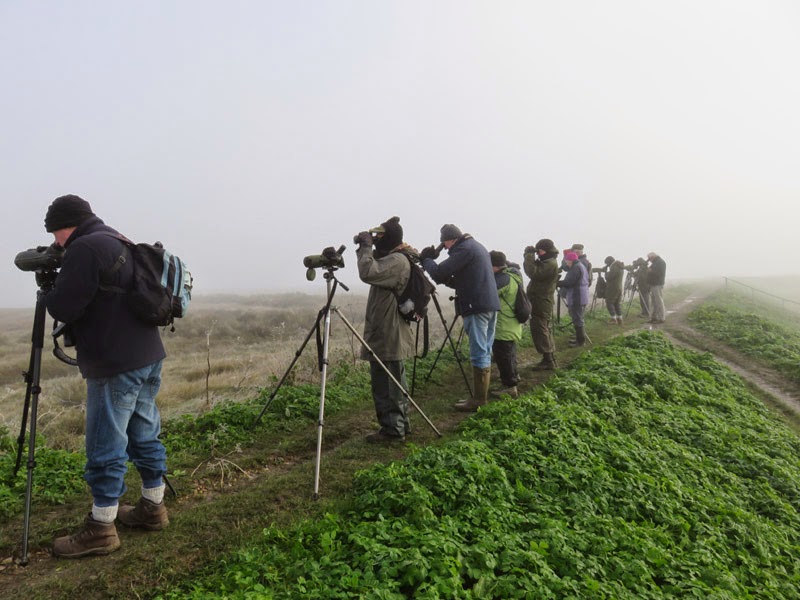A big flock of at least 1500 brent geese flew overhead right into the direction of the north-west wind with the big snow flakes driving into their faces. It was a great winter spectacle with all the geese calling loudly to each other, the whole sky of white was filled with the black shapes of geese. Their passage overhead took longer than usual in the driving snow shower. Most of the geese dropped down noisily into the Strood Channel.
A spotted redshank was wading in the deep water of the Strood channel, the first sighting of the winter here. The only other birds noted during the low tide walk were 50 knot and 150 teal.
Around the flooded fields a pair of stonechat was by the dyke while other small birds seen were 2 corn buntings that flew off a bush towards the bottom of Strood Hill, 4 reed buntings, rock pipit, 4 meadow pipits and also 10 goldfinches by the caravan site. A group of six little egrets were stalking the ditches.
In Firs Chase on Saturday morning a male blackcap was feeding on some honeysuckle berries right beside my back door. First ever winter sighting of a blackcap in the garden.
The day before brent geese were also the most obvious birds on the Strood fields during a visit there on Friday morning.
Around 1000 geese were feeding in the very muddy fields beside the seawall.
The flock had been spooked off the back wheat fields higher up the slope, before landing closer to the seawall. All the brent geese appeared to be the dark-bellied race with no black brants or pale-bellied being found.
The main highlight during the walk on Friday was watching a peregrine in full hunting mode, trying to chase down a poor redshank, which eventually managed to escape by flying as high into the sky as it could. It climbed so high it soon became just a tiny speck through the binoculars and with the peregrine in hot pursuit, however the hunter surprisingly gave up the chase high over the Strood Channel. It turned its attention elsewhere and swooped back down onto the fields before landing on a tussock in the muddy field.
A common buzzard flew low past the peregrine on the field, heading up the slope where it perched in a tree. The buzzard must have flown onto the Island from the Feldy / Peldon direction, an unusual direction for this new arrival. A female marsh harrier was seen hunting over the Feldy seawall a short while earlier.
Two stonechats were seen, one close to the dyke and another working its way along to a back ditch. Other small birds were 2 rock pipits, 3 reed buntings, 5 meadow pipits and 5 skylarks.
Lots of waders were feeding in the muddy fields during the high tide with 100 golden plover, 50 lapwing, 50 ringed plover, 50 dunlin, 10 grey plover, 10 turnstone and 20 redshank. Along the Strood 50 knot was the only wader flock of note.
A male pintail flew along the Strood channel towards the Hard late on Friday morning. In the Quarters six red-breasted mergansers and 10 little grebes were seen.















































